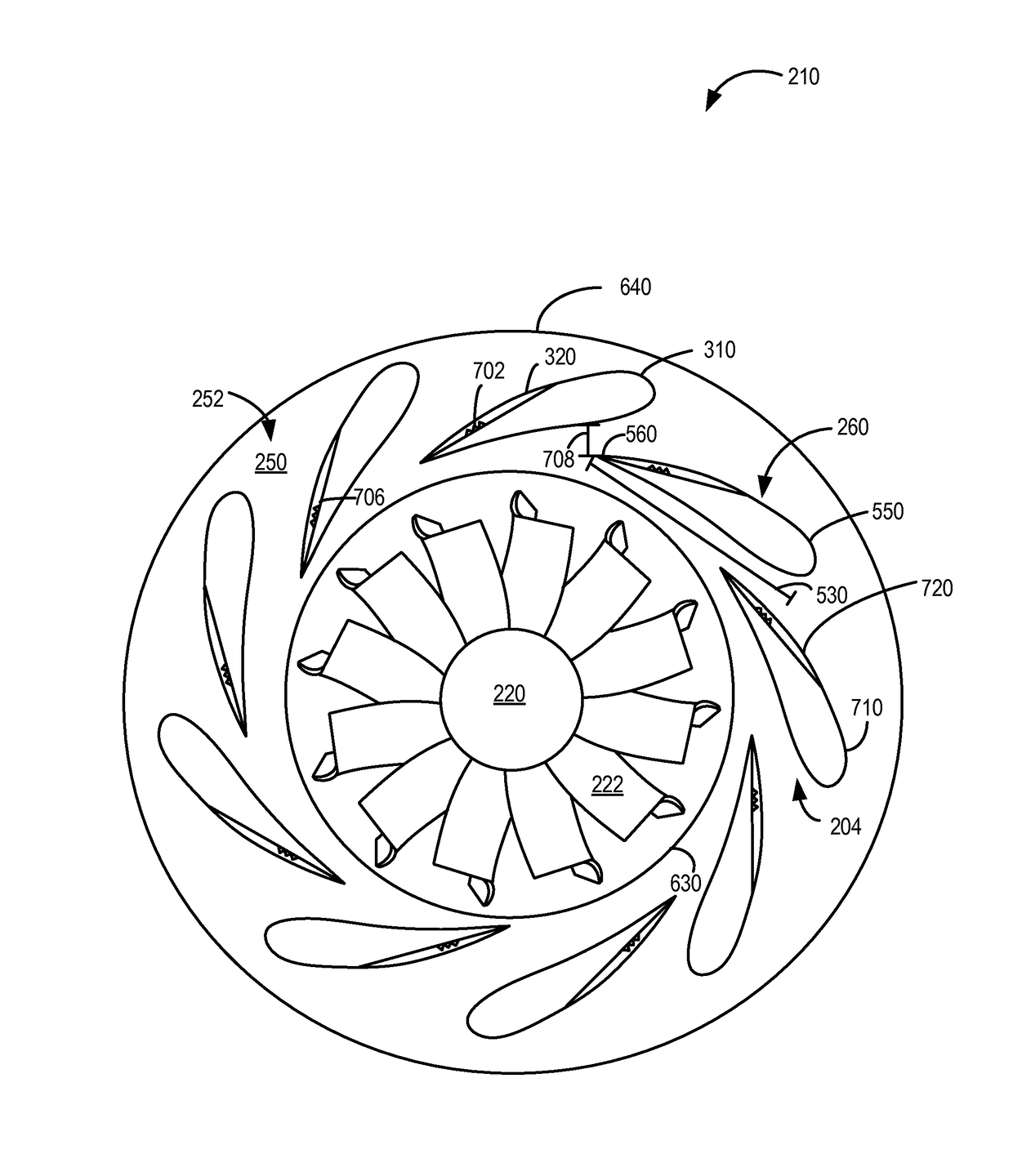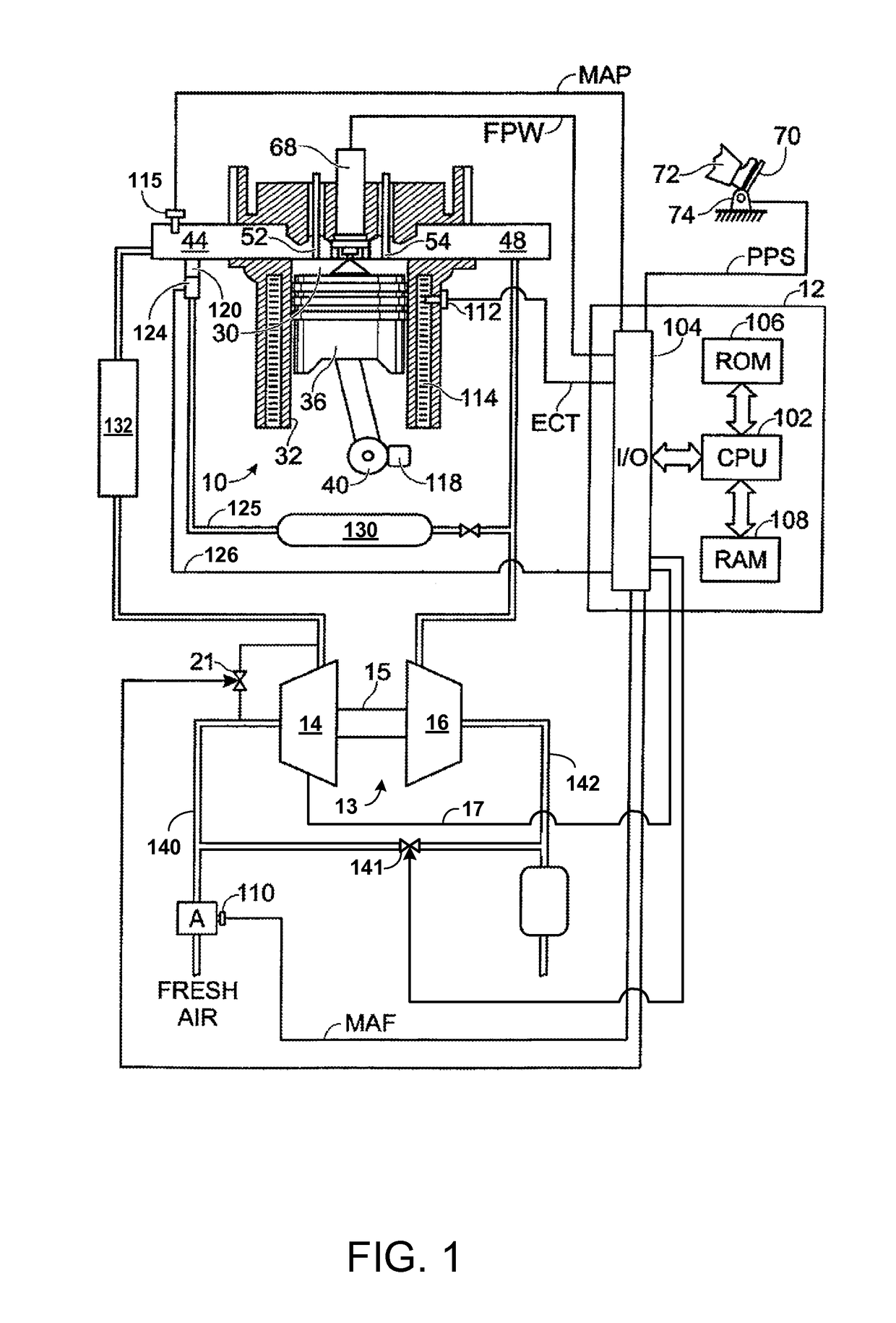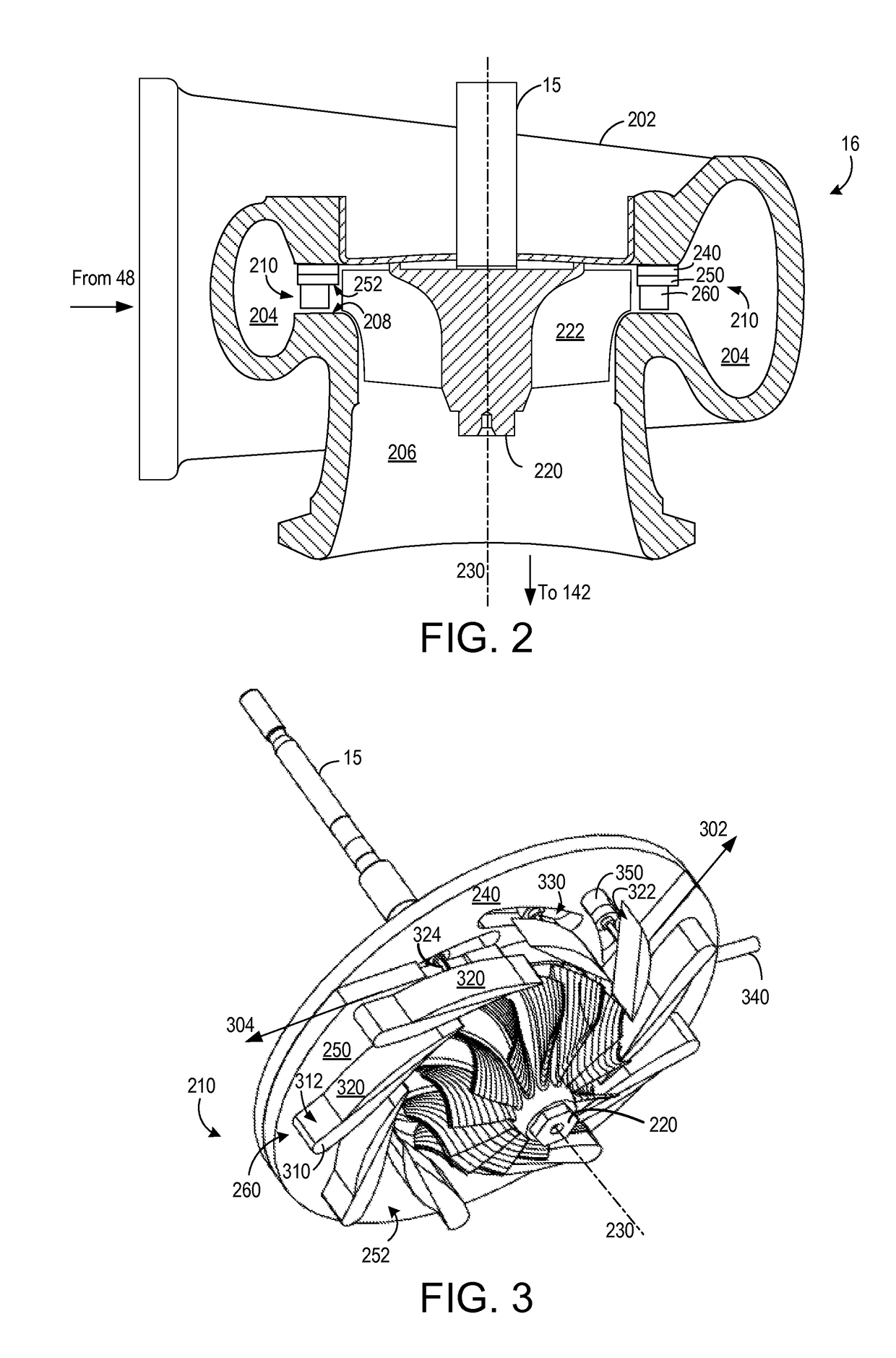Systems and methods for a variable geometry turbine nozzle
a variable geometry and turbine nozzle technology, applied in the direction of machines/engines, mechanical equipment, radial flow pumps, etc., can solve the problems of increasing boost pressure, increasing aerodynamic flow loss, and increasing the angle of incidence of gas flowing across the turbine blade, so as to improve engine torque and/or power output density, boost intake air pressure, and boost the effect of air pressure and flow
- Summary
- Abstract
- Description
- Claims
- Application Information
AI Technical Summary
Benefits of technology
Problems solved by technology
Method used
Image
Examples
Embodiment Construction
[0023]The following description relates to systems and methods for variable geometry turbochargers of internal combustion engines. An example engine with a turbocharger is illustrated in FIG. 1. The example turbocharger includes a compressor driven by a turbine, such as the turbine illustrated in FIG. 2. The turbine may include a turbine nozzle and a turbine wheel, such as shown in more detail in FIGS. 3-8. FIG. 3 shows a perspective view of an example embodiment of a turbine nozzle and a turbine wheel. Similarly, FIG. 4 shows a perspective view of an example embodiment of the turbine nozzle having nozzle vanes. In one example, each nozzle vane may include a stationary vane and a sliding vane having flat sliding surfaces, as shown on the top image of FIG. 5. In another example, each nozzle vane may include a stationary vane and a sliding vane having cambered (e.g., curved) sliding surfaces, as shown on the bottom image of FIG. 5. Further, the nozzle vane having a stationary vane and...
PUM
 Login to View More
Login to View More Abstract
Description
Claims
Application Information
 Login to View More
Login to View More - R&D
- Intellectual Property
- Life Sciences
- Materials
- Tech Scout
- Unparalleled Data Quality
- Higher Quality Content
- 60% Fewer Hallucinations
Browse by: Latest US Patents, China's latest patents, Technical Efficacy Thesaurus, Application Domain, Technology Topic, Popular Technical Reports.
© 2025 PatSnap. All rights reserved.Legal|Privacy policy|Modern Slavery Act Transparency Statement|Sitemap|About US| Contact US: help@patsnap.com



